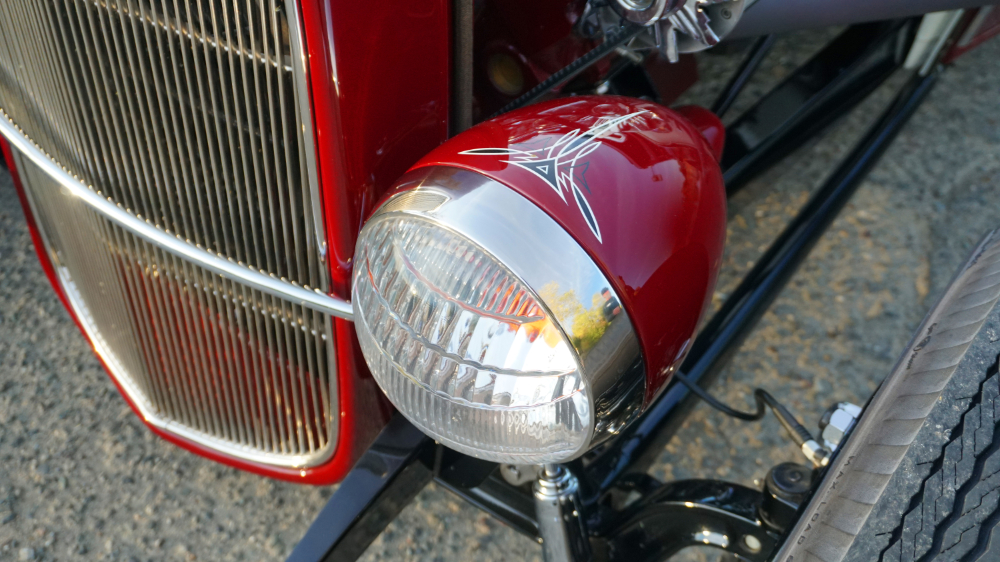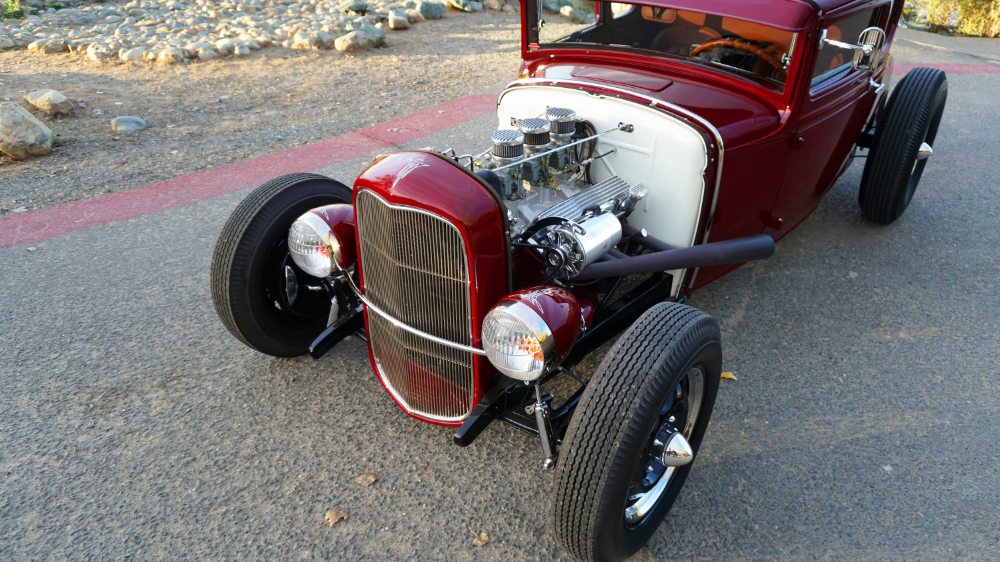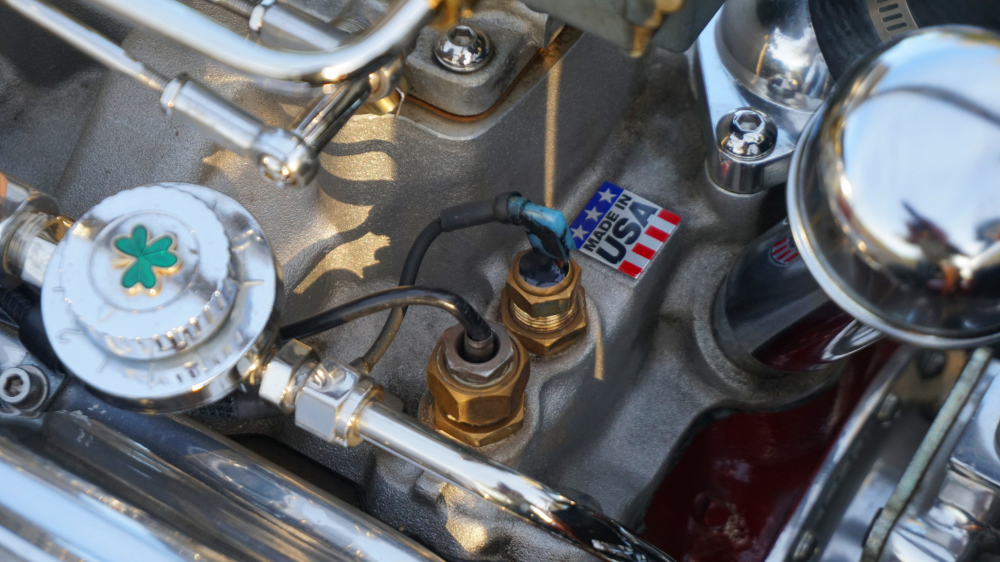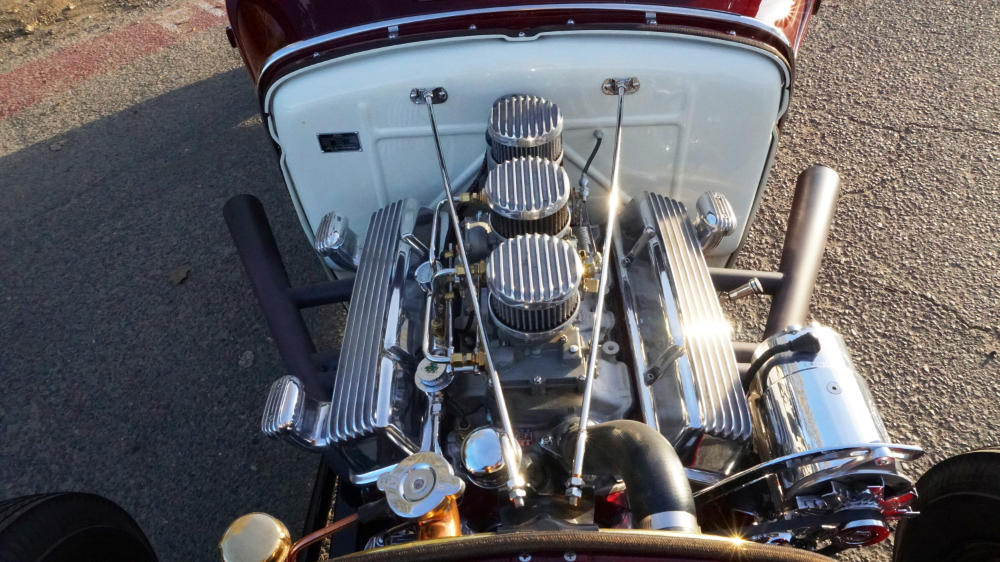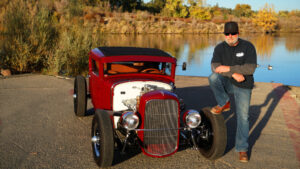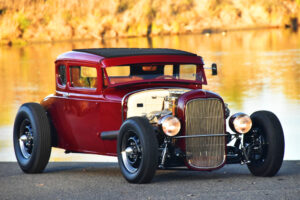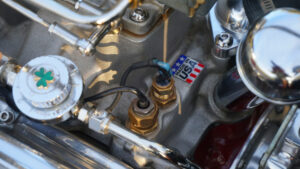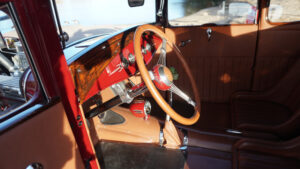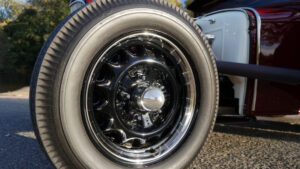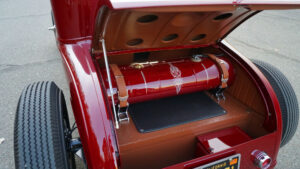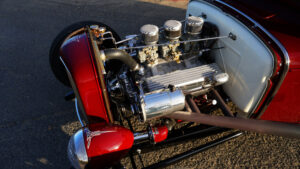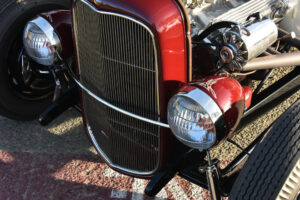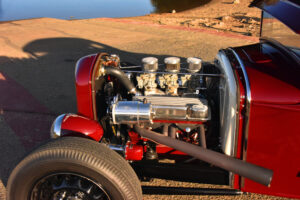I meet Dennis through my good friend Jim Quaschnick, they both live by the Sacramento river. He has a great garage and mancave, and it was not easy to settle on what car to shoot. But I need hot rods for my web magazine and I love trucks. So I photo a 65 Chevy trk just outside, and then took it of with my iPad Google satellite map in hand for the location. I always try to find locations close by so the car owners are not exposed to a long time in traffic. And the river gave me a great location, nice an quiet, with just a few people who show respect and watch us work from a distance. Dennis used a 383 Chevy Stroker , with a Borg Warner T10 Transmission. But when you look at the history of this car, there was no 400 hp that Dennis has on a Bowling brother cassis. It was kind of simpler than that: Interestingly, of the two 1932 Fords, the 4-cylinder-powered Model B first became the object of the “hot-rodding” craze. The reasons were simple. A used Model B was much less desirable and could be purchased more cheaply than a V8-powered ’32 Ford. Plus, the Model B’s 4-cylinder engine lent itself to using the same types of parts and techniques used to “hop up” Model As.
By the late 1930s, the “speed” industry was manufacturing a wide variety of parts to increase the performance of both the Ford “flathead” V8 and the 4- cylinder Model A and Model B engines. With hundreds of thousands of used Fords on the market, anyone wanting to build a fun-to-drive car could inexpensively buy a ’32 Ford Coupe that could serve as a blank canvas for a variety of modifications. Among the simplest of those was removing the fenders and running boards, ditching excess weight and giving the car a purposeful look at the same time. Voila! A hot rod. World War II intervened, but after the war, the hot rod culture began to gain steam again. However, relatively inexpensive and powerful highcompression V8 engines like the legendary Chevrolet “small block” changed the post-war hot rodding industry. Installing these engines in ’32 Fords became routine.
A majority of the early hot rods were “open cars,” typically stripped-down Model T, Model A, or Model B roadsters, but the ’32 Ford Coupe continued to grow in popularity to become one of the centerpieces of the hot rod movement. While a true dyed-in-the-wool hot rodder still might point to a roadster as the epitome of what a “hot rod” should be, a strong case can be made for the Deuce Coupe. And one reason is its substantial presence in popular culture.
Dennis looks up front is 32 Grill and the Artillery wheels are from a 1935 Dodge. He is a classic customizer that finds parts from all over, and the talented ones make them look and work so well. Dennis is very much such a guy, and the height of his hotrod was not made just for its look,, but so he could stand next to it and put his arm on top of its roof. The Model A that he built his car on was a serious new investment by Ford. It emerged was as handsome as it was inexpensive. With its lower chassis, it was longer and more substantial than the spindly Model T. The new model’s hood and cowl were much larger and longer than those of its predecessor, hinting at the bigger, more powerful engine hidden underneath. The car’s all-new 200.5 cubic-inch 4-cylinder engine delivered then twice the horsepower (40) of the Model T. But of course, it was just the start of how this car would survive for many years to come to the delight of customizers like Dennis, and photographers like me.
Thanks to Jack R Nerad for the extra information.
















